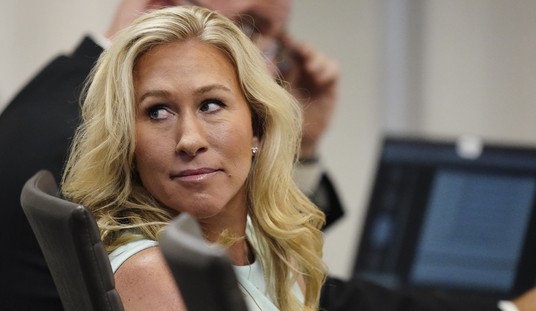
The stakes are high for Donald Trump tonight in his home state of New York. Ted Cruz and John Kasich would probably be out of the race now without big wins in their home states (Cruz beat Trump by 17 in Texas, Kasich swept all 66 delegates in Ohio; Marco Rubio dropped out after losing Florida). Trump needs a lot of delegates from the Northeastern primaries between today and next Tuesday if he is to have any hope of getting to the 1,237 pledged delegates he needs to avoid a contested convention fight he is likely to lose. 95 delegates are at stake in New York; Trump is unlikely to get a complete clean sweep of them, but he needs to clear 50% of the statewide popular vote and 80 or so delegates to retain any chance of reaching 1,237. Here’s what to watch for tonight:
When do the polls close? 9 p.m. Eastern.
When will results be reported? In general elections, New York is usually called by the networks the instant the polls close, but that’s because the major statewide races are lopsided. But this is – as discussed below – a statewide race plus 27 local races, and some of those may vary widely in how quickly they report results. Past experience is hard to generalize from, because (1) New York’s optical-scanner machines are relatively new, New York having stuck for many years with the old fashioned lever-pull machines that people in other states have only seen in movies; (2) vote-counting was really slow in 2012’s general election due to Hurricane Sandy. Early reports have lots of SNAFUs. So, stay tuned, we could be here a while. But don’t touch that dial – RedState will have coverage throughout the evening.
How are delegates awarded? New York’s method of awarding its 95 delegates is neither a purely proportional nor purely winner-take-all system, and is somewhat similar to what we’ve seen previously in Illinois and will see later on in California, Connecticut, and Washington. 14 bound delegates are awarded on the basis of statewide results; the other 81 are awarded on the basis of the voting in each of the state’s 27 districts, 3 per district.
For both the statewide and district balloting, the winner gets all the delegates (all 14 for the state, all 3 for the district) if the winner breaks 50% or if no second-place finisher gets 20% (mathematically, in a 3-way race, if the winner is under 50, somebody has to be above 20). Statewide, the 20% threshold could matter if Trump is below 50 and one of Cruz or Kasich is below 20, since then the 14 statewide delegates would be split two ways rather than 3. In the districts, with only 3 delegates to divide, it’s simpler: the winner gets 3 delegates for breaking 50%; if the winner’s below 50, he gets 2 and the second-place finisher gets 1.
Will Trump win? Yes, barring a truly improbable polling miss. As Leon noted earlier, the pollsters have struggled this year, but they are pretty unanimous that Trump is way ahead and very likely to break 50% statewide, which means he would also break 50% in at least 10-12 districts, probably more. The polling also has Cruz finishing third behind Kasich and probably struggling a bit to break 20% statewide. New York is just a bad state for Cruz, compounded by his slam on Trump’s “New York values” during the Iowa race (which amazingly was only three months ago). Long Island Republican Pete King, who previously endorsed Rubio and is the only elected pro-lifer anywhere near New York City, hates Cruz so much he says he would take cyanide if Cruz was the nominee.
Where will Trump win? Most of the delegates are awarded by district, and since some of New York’s upstate districts are quite Republican while districts in and around New York City are overwhelmingly Democratic. That means that the statewide polling is not that helpful a guide to knowing who wins the districts, even with the help of occasional polls like the Optimus poll that have tried to poll each district.
We can, however, generalize about a few things. Trump is likely to utterly dominate the Buffalo area districts like NY-23 through NY-27 (a stronghold for Carl Paladino, the proto-Trump who was our disastrous gubernatorial nominee in 2010), Staten Island (NY-11), and probably several other districts in Brooklyn, Queens and Long Island like NY-1 through NY-6, NY-8. He also looks to be very strong in NY-17 and NY-18, the districts just north of Westchester and Rockland. Endorsement-wise, New York is Trump’s best state: among others, he has Paladino, Rudy Giuliani, and a couple of Congressmen around Buffalo.
His main competition downstate (from Westchester on down) will be Kasich, who some polls have shown to be surging; Kasich is the kind of candidate that Republicans in places like Manhattan and Westchester are likely to warm to. I live in NY-6 in Queens (a district that is heavily Democratic and 40% Asian, one of the most Asian districts in the country), and I’ve seen nothing of the Cruz campaign while being bombarded with robo-calls for Kasich, who also has signs up around the highways. Kasich’s endorsers include George Pataki (who previously backed himself and then Rubio), 2013 Mayoral candidate Joe Llhota, and possible 2017 Mayoral candidate Eric Ulrich. Cruz has…don’t ask.
Cruz has not been absent from downstate, however, but has been picking his targets narrowly: majority-minority districts in places like the Bronx that have few and idiosyncratic Republicans, and parts of Brooklyn and Rockland County that have a lot of Orthodox Jews (New York’s ethnic, racial and religious politics are notoriously Byzantine).
But the real Cruz-Trump battleground will be the heart of upstate, the mostly Republican districts around Albany, Syracuse, and the Adirondacks, NY-20 through NY-24, maybe NY-25. Those are the places that will really decide how strong Trump is tonight.
Who can vote? Well, it’s a little late to ask that now, eh? It’s a closed primary, and New York has the earliest deadline in the country to change your party registration – you had to do it before last Election Day in November. Worse yet, the Board of Election website simply tells voters:
How to Make Changes to Your Registration
Change of Name and/or Address
The voter registration form should be used as a change of address form. Notices of change of address from registered voters received at least 20 days before a special, primary or general election by a county board of elections must be processed and entered in the records in time for that election.
Change of Party Enrollment
The voter registration form should be used to change your party enrollment from one party to another or to enroll for the first time in a party. A change of enrollment received no later than 25 days before the general election shall be deposited in a sealed enrollment box and opened the first Tuesday following that general election and entered in the voter’s registration record.
The FAQ section says:
How do I change my enrollment?
If you wish to change your enrollment from one party to another or from not-enrolled to a party, send a Voter Registration Form with your new choice to your county board of elections. The board will notify you when the change takes place, by Law, after the next general election.
You gotta read those real carefully to notice that this means 25 days before the last general election for this primary; the website nowhere mentions the deadline explicitly. That’s bad for Trump, and polling places are apparently collecting plenty of provisional ballots from people who don’t qualify, which presumably will never be counted. Two of Trump’s children and his own lawyer are among those who won’t be able to vote for him. If Trump underachieves tonight, expect that to be a major reason why.
What does Trump need? This is where the context gets important. Look at the calendar ahead:
Trump is widely expected to dominate the Northeast, but after that, only West Virginia and New Jersey are really likely Trump country rather than contested turf. And Trump at this writing has – the count varies by source – 44.5% of the delegates awarded so far. If he isn’t sitting on 50% or more at the end of this month, it seems pretty hard to see him getting there by June 7. But how dominant does Trump need to be in order to get to 50% before Indiana, so that he can just split the rest of the way and win 1,237 delegates?
Pretty darn dominant. There will be 1,970 delegates handed out by April 26, so Trump would need to get to 985 from his present 757: a haul of 228 delegates out of 267 awarded over the next week – 85%. But the 54 “loophole” delegates in Pennsylvania are not bound, and Cruz may take half of those no matter how the popular voting falls out. Even if we assume Trump gets 30 out of 54, he’d need 198 of the remaining 213 delegates – 93%. Which is why he can’t afford to lose more than 10-15 delegates tonight or he will go into next Tuesday needing a clean sweep, even in Rhode Island (which is proportional) and Connecticut (which has the same 50% threshold statewide that NY does).
So, expect good news for Donald Trump tonight, on its face – but news that may actually be very bad for him if he’s bringing home 70 or 75 delegates.














Join the conversation as a VIP Member